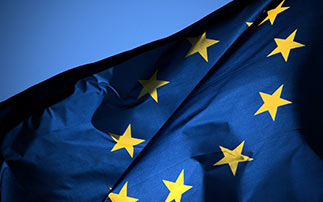The package of measures, adopted on 13th May 2020 by the European Commission, on tourism and transport in 2020 and beyond, initiated the reopening of Europe’s internal borders and announced the launch of a specific website designed to provide travellers with all the information they need to travel safely in the Union. Although, European efforts are still poorly coordinated, just as the issue of opening the external borders – which is also beginning to arise – is not a consensus amongst the Member States.
I – Commission’s orientations on resuming safe travel and the recovery of European tourism sector
In order to ensure that European citizens once again have the capacity, confidence and security to move in the European Union, the Commission has unveiled a series of guidelines and recommendations for Member States. The measures (detailed here) will aim to:
- Restore freedom of movements and lift internal border controls in complete security
- Restore transport services throughout the EU while protecting the health of the passengers and workers concerned
- Safely restore tourism services
- Ensure cross-border interoperability of tracing applications
- Make vouchers a more attractive alternative for customers
II – The difficult coordination of Member States in this area
While the EU is pushing for the gradual reopening of the its internal borders in order to save the summer season, the Union also insists that this reopening must be “concerted”, “as harmonious as possible” and “non-discriminatory”. However, as Member States decide whether or not to follow the recommendations of the Commission, the reopening of borders is done in a disparate way.
Some countries such as Germany, Belgium, France and Greece restored free movement with all EU countries on Monday 15 June. Italy, Croatia and Poland had already initiated reopening measures before. Other countries are also reopening their borders while maintaining certain restrictions for travellers from European States where the infection rate is still considered too high. Amongst them are: Hungary, Bulgaria, Austria, the Czech Republic, Slovakia, Latvia…. The United Kingdom and Spain are imposing quarantine measures on travellers; this has resulted in reciprocal measures, particularly from France. The case of Sweden is also unprecedented: as the only country not to have imposed containment, Sweden now finds itself ostracized.
The coordination of the opening of the internal borders of the European Union therefore has its limits and the Member States have to work together for more harmonization.
III – The “Re-Open EU” website
To help citizens find their way around the possibilities of travelling in the European Union, the Commission has launched a website to guide Europeans who wish to spend their holidays in Europe.
The Re-open EU platform provides real-time information on borders and on the means of transport and the tourism services available in each Member State. It also includes practical information provided by States on travel restrictions, public health and safety measures, such as physical distancing or the wearing of face masks, as well as other useful information on European and national tourism offers.
This will enable Europeans to decide, responsibly and fully informed, how to manage the risks that coronavirus continues to pose when planning their holidays and travels.


